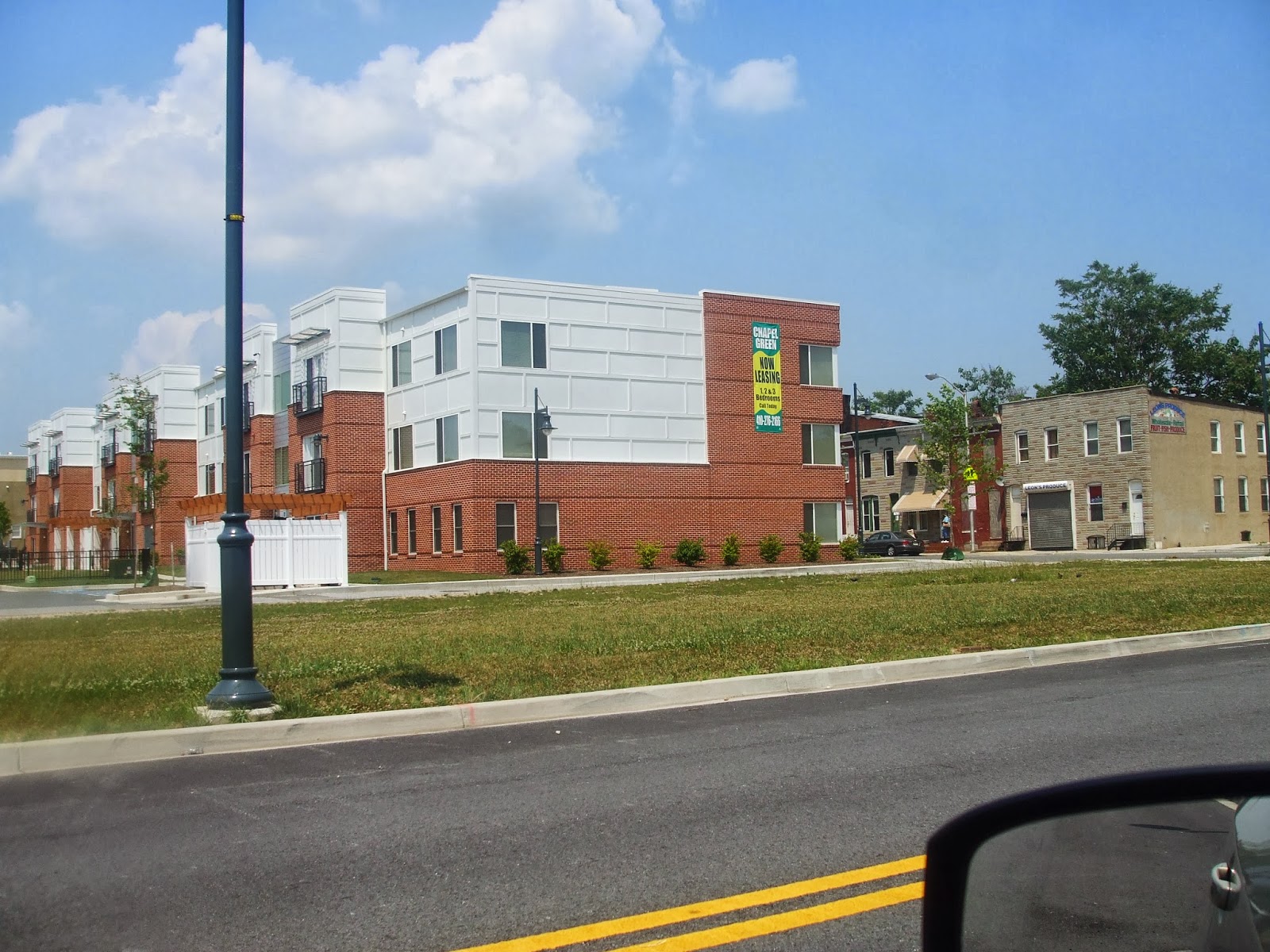The Social Security Complex originally moved to this
newly constructed Super Block fortress as part of an Urban Renewal
Effort with the theory that bringing public jobs Downtown would fuel
private investment in the already ailing Westside of Downtown (pictured above). This did
not occur and Downtown felt became all the more blocked off from West
Baltimore as a result. Connectivity between Downtown and West Baltimore
had already weak due to the Road to Nowhere, MLK Boulevard, and the
crime ridden high rises of Murphy Homes and Lexington Terrace on either
side of the Road to Nowhere.
Today this area of the City along with State Center,
Lexington Market (pictured above), and the Super Block represent some of the most
potential and hope for Downtown, Downtown's Westside, West Baltimore and
the City as a whole. It's time too streamline development plans so that
each parcel of land has its full potential recognized. It's also
important to note that there are some bright spots in the area, both
Lexington Terrace and Murphy Homes have been torn down and replaced with
The Townes at the Terraces and Heritage Crossing respectively and the
new Red Line is slated to run right through the area. Just to the south
in Lexington Market is the potential for a transit hub connecting the
existing Light Rail, the existing Subway, and the Red Line.
Before any real dialogue can take place regarding
the redevelopment of the soon to be vacated Social Security Complex, we
must first talk about the Road to Nowhere. I find that to be the biggest
hurdle in opening up the barriers between West Baltimore and the
Westside of Downtown. Currently there is a Master Plan for dismantling
and redeveloping it however it has an obvious fatal flaw; they're doing
it backwards! The plans for redevelopment start at the opposite end of
the Road deep into West Baltimore at the MARC Station (pictured above)where the
redevelopment energy now in Downtown's Westside is still eons away.
When it comes time to demolish the Social Security
Complex, it must be done cohesively with the Road to Nowhere. As soon as
the larger than life than life intrusion hits the wrecking ball, so too
should the bridges (pictured above)that carry the Road to Nowhere traffic over MLK
Boulevard and into Downtown where the re-assume being parts of Franklin
and Mulberry Streets. Westbound, from Downtown Franklin St. traffic will
never merge onto the Freeway as its right of way will be gone.
Eastbound from West Baltimore, the freeway can remain almost in full
except ALL traffic will exit onto the MLK Boulevard "ramp" thus
eliminating the bridge. This idea for the Road to Nowhere is not my own,
it was first proposed by fellow Blogger Gerald Neilly several years
ago. I just happen to support it.
Now that the Social Scurity Complex has been
demolished, we can finally have a real conversation about redevelopment.
West of MLK Boulevard, I would build a Town Home Community to bridge
together Heritage Crossing (pictured above)and the Townes at the Terraces. It will be a
mixture of Home Ownership units both market rate and affordable. Fremont
Avenue will be reopened between Franklin and Mulberry Streets and will
serve as the western edge of this new Community. As for the Social
Security Complex, I don't really know what to do with it at this time.
All I can do is say what I don't want.
I don't want anymore Office Space. Well, I don't
want anymore now. The City has way more Office Space than it can handle.
The Central Business District (pictured above) has high vacancy rates as Offices have begun
to move to Inner Harbor East and Harbor Point when it comes online. In
fact if you read my "Keeping the State Out of State Center" post you
will see that I intend on demolishing the State Center and having all of
its Office Space move to the Central Business District to lower the
vacancy rate. I would purposefully stall the any Office portion of State
Center's redevelopment until the demand for it has returned.
I also don't want incredibly tall buildings. I don't
wall to wall off the Westside of Downtown from West Baltimore like the
Social Security Building does already. A big reason I want the building
gone is to create a seamless transition from the low density town homes
(pictured above) west of MLK Boulevard into Downtown. Block by block the buildings should
gradually get a little bit taller. New development can be high density
without being very tall. Also I want to get away from parking garages
that are visible. As the buildings get taller they should mask parking
garages that will inevitably grow in height as well. Development should
be mindful of the eventual Red Line, making room for would be stops.
I'm pleased that the Social Security Complex is
being vacated and relocated. I'm even more pleased that the jobs are
staying in the City and I hope this means major redevelopment for the
building and surrounding areas. One reason I'm being so vague about what
could go in its place is that the possibilities are endless. It's no
wonder that I'm pleased about the pending move.




































